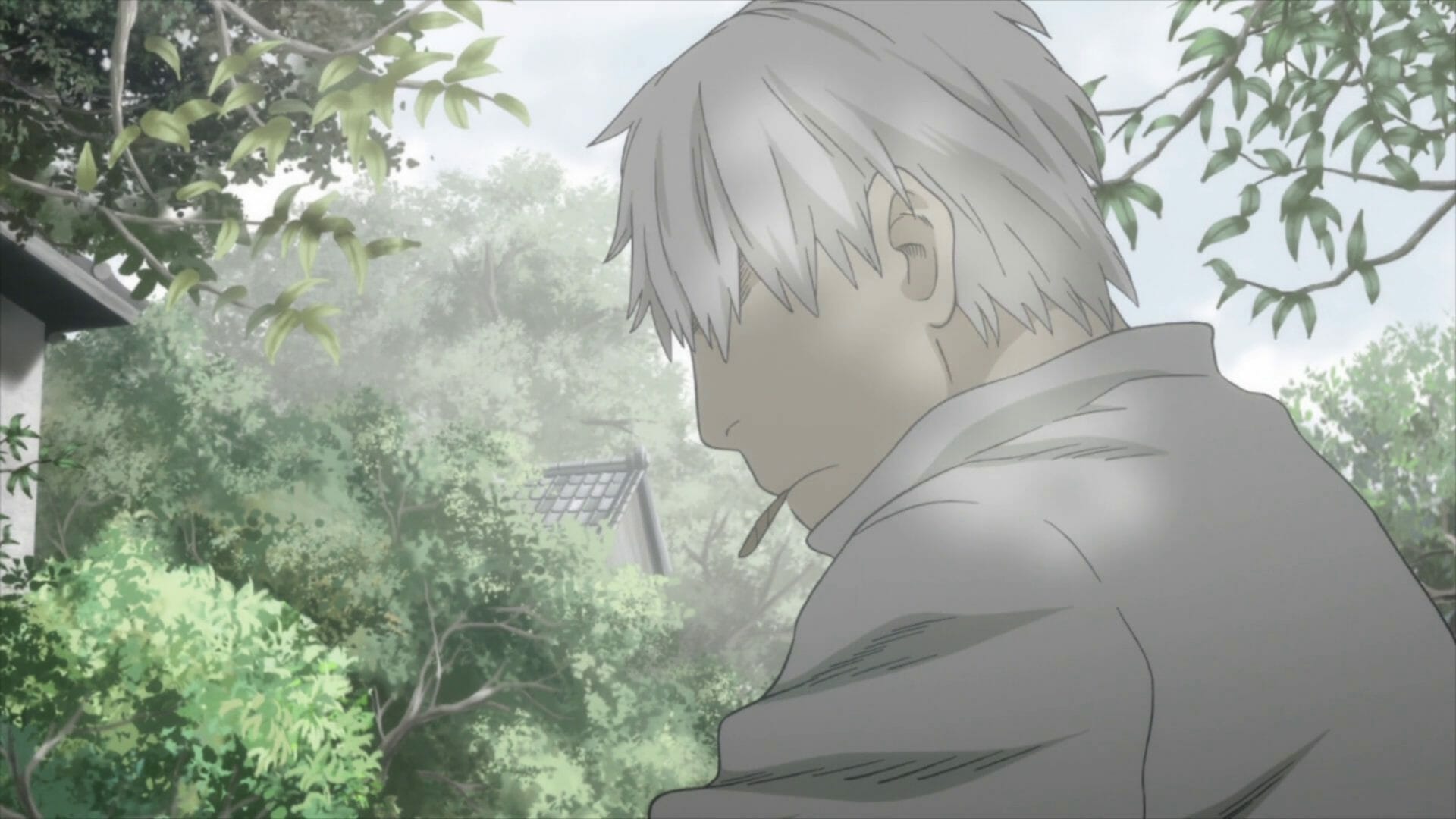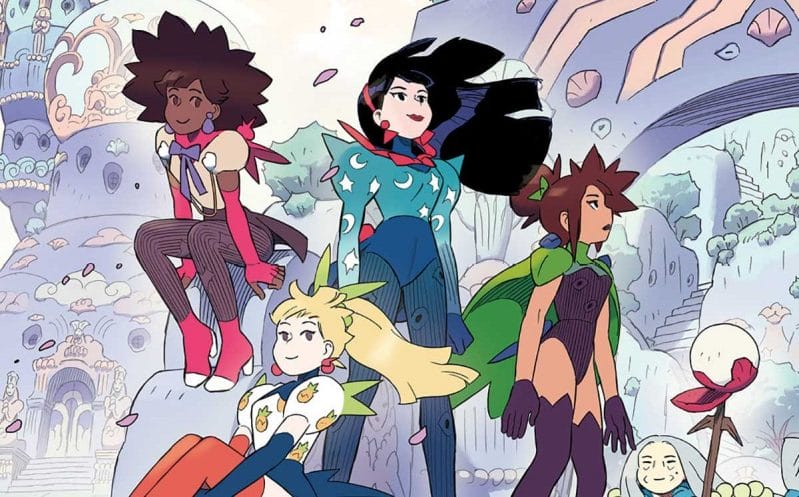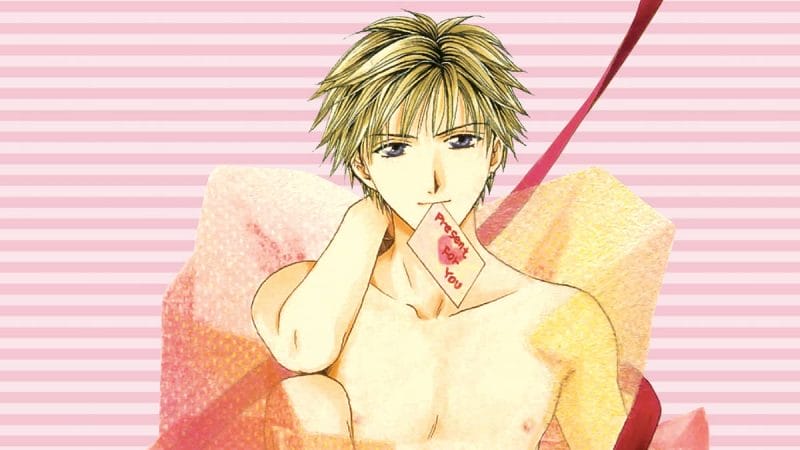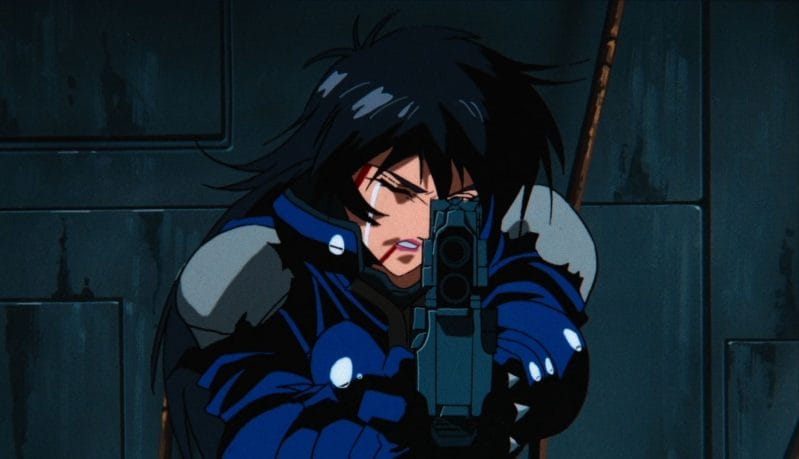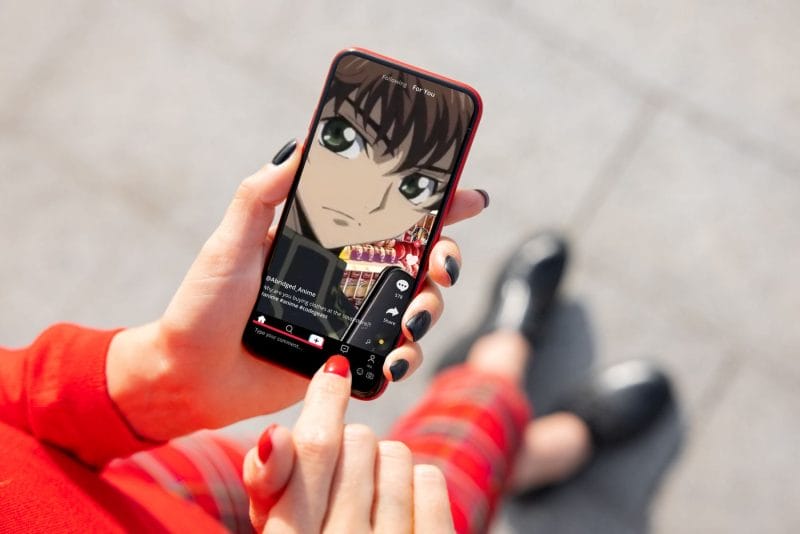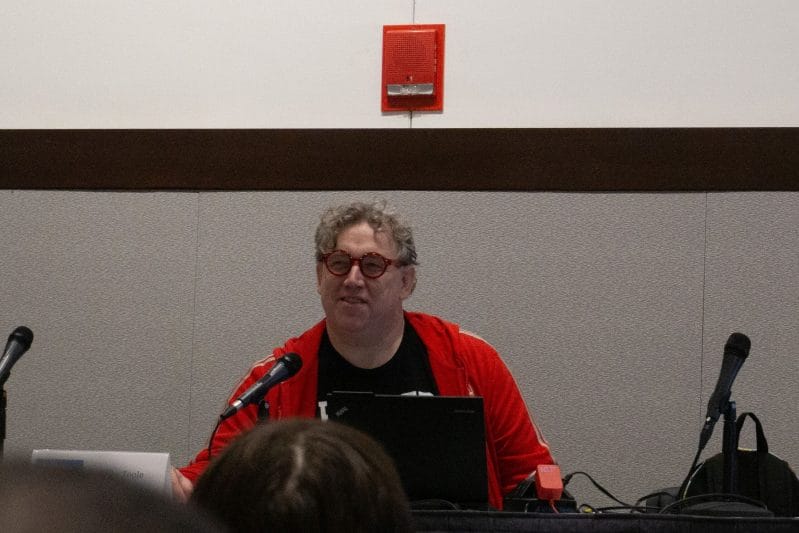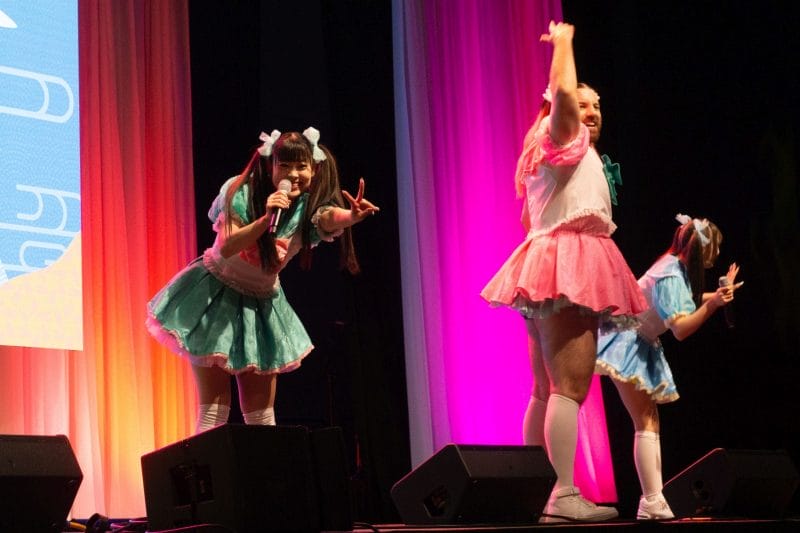The titles I have covered thus far contain explicit references to Japanese folklore and their depictions of yōkai. From the oni-like Invader family in Urusei Yatsura to the hanyō in GeGeGe no Kitaro, such anime characters reflect a long history of oral and written stories regarding monsters and demons. Mushi-shi takes a different approach, for rather than the typical yōkai shown in the previous works, the series presents various vignettes of mysterious life forms known as mushi. These organisms reside in the Kouki, a legendary river of light that pervades the earth and provides sustenance for all other life on Earth.
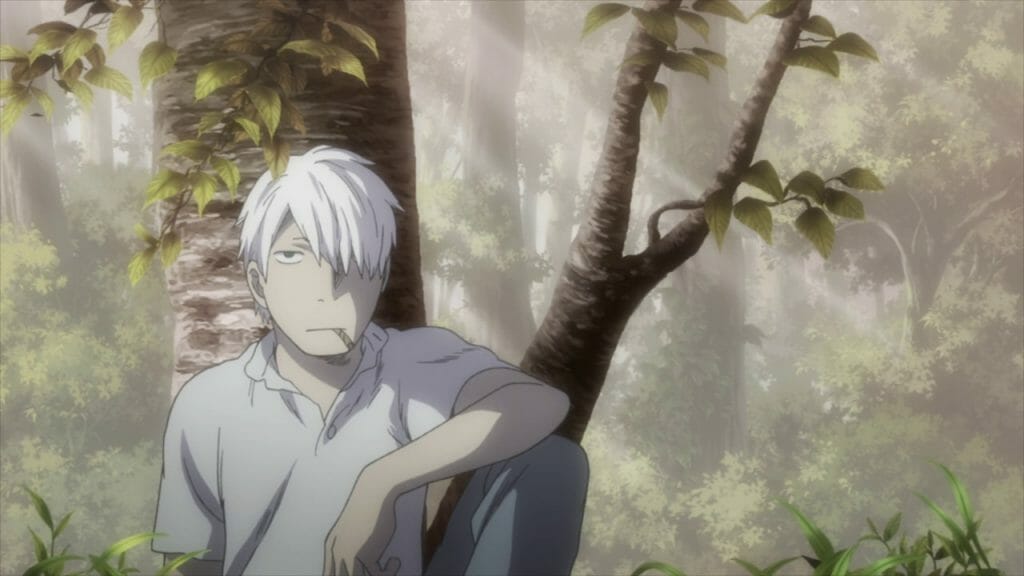
Like yōkai, the mushi exhibit unusual characteristics when they come into contact with humans, who operate as hosts for any mushi that inhabit their bodies. Humans can even become mushi themselves, as can be seen in the series’ premiere. The episode features a boy who has the ability to see the organisms, a trait he shares with his late grandmother. The grandmother participated in a sake-drinking ceremony with mushi that would have made her a complete mushi herself, but a raven’s interruption of the ritual caused the ghostly beings present in the ceremony to disappear, leaving the woman’s transition incomplete. Ginko, the protagonist of the series, intervenes to allow the grandmother to finish her transition, having the boy draw a sake cup that becomes real to fix the one that was shattered in the ritual. Through this intervention, the boy can finally see his grandmother, as she can become the full mushi she would have become earlier.
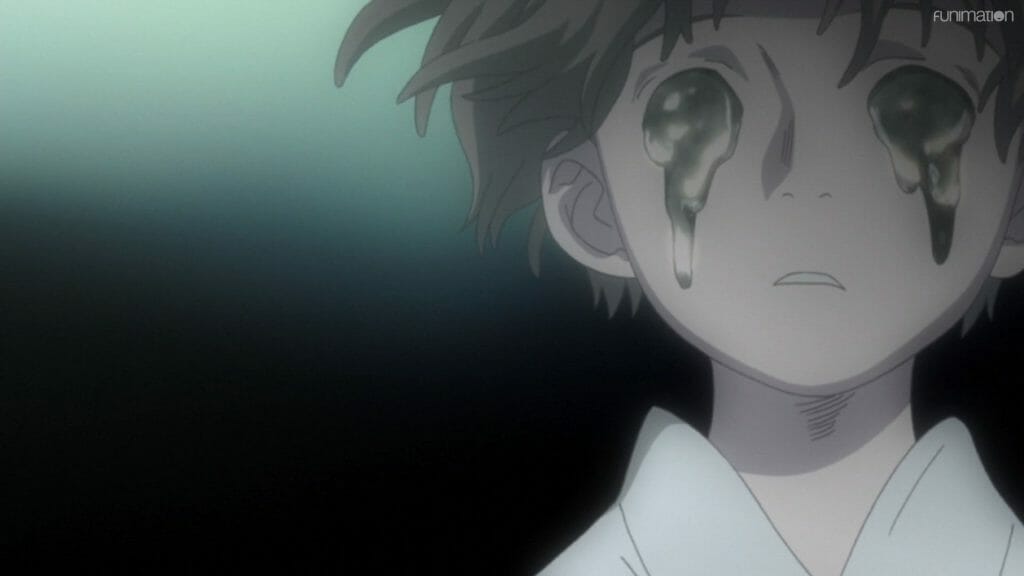
This first episode establishes the general format all other episodes take. Ginko travels to a semi-remote village to assist a resident suffering from some condition brought about by their encounter with mushi, ultimately helping them resolve any sort of conflict that arose during the person’s time as a mushi host. To give another example, the second episode (“The Light of the Eyelid”) features a girl who has mushi residing in her eyelids, resulting in her having a painful sensitivity to light. She inadvertently passes the condition to her cousin, who helped her and played with her while she was sequestered in a dark shed. The girl’s discussion of “second eyelids” helps present this unusual circumstance as something that could happen to anyone. According to the narrator, people used to have such secondary eyelids at birth, but opening their primary eyelids usually deactivates the secondary pair entirely. The mushi in this episode thus provide some means of reactivating those eyelids, at the expense of the host’s health. Ginko describes these specific versions afflicting the girl as parasitic in nature, drawing energy from their host.
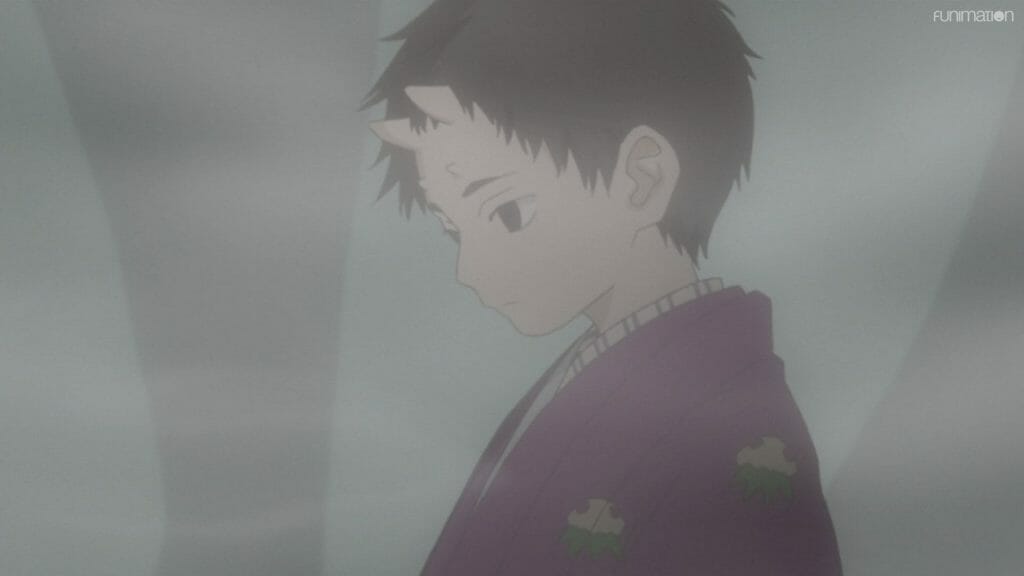
Episode three, “Tender Horns,” bears a similar premise – parasitic mushi find their way into the young grandson of a village chief in the mountains, consuming sound and silence. His mother had the same condition, which ultimately killed her when she wasted away. The horns on the boy’s head emerged when he placed his hands over his ears in an attempt to prevent the mushi from interfering with his hearing. Ginko is able to offer a bit of unusual trivia concerning the specific organisms in the boy’s body – there are two separate but interrelated mushi called Un (which eats soundwaves) and Ah (which eats the silence left behind). The names refer to a concept that originated in Sanskrit called “a-un,” part of the phrase a-un no kokyū; this expresses the idea of “inhaling and exhaling” in Buddhist philosophy, represented in art by two lion-like sculptures (one for each syllable).
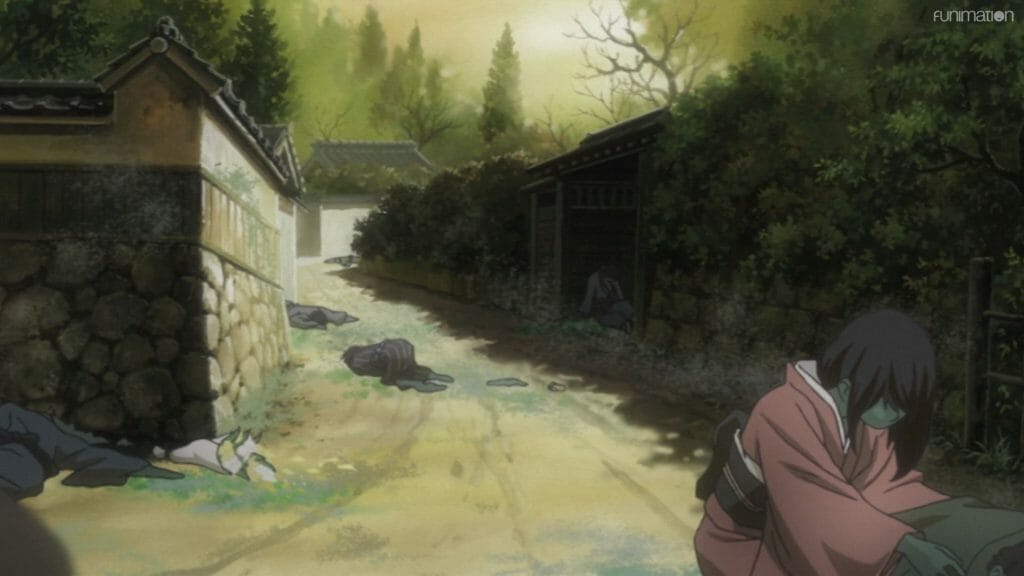
The story in Mushi-shi, as can be seen by these episodes, follows an episodic format, with Ginko as the connecting element. The series explores a Japan that exists during the Edo or Meiji periods, where small villages were fairly insular, and villagers rarely traveled beyond their hometowns. Episode two, for example, features a small mountain village that has few inhabitants. Episode four, titled “The Pillow Pathway,” also uses a village as its setting, though only one resident still remains. This person requests Ginko’s help in regards to various premonitions that he receives in his dreams that come true. Ginko explains that the predictions are a result of dream-eating mushi known as Imeno no Awai (translated as “Field of Dreams”), who reside in the host’s pillow. The man became the sole inhabitant of his village after the other residents disappeared after contracting an unusual “green mold” that covers their entire bodies. The man’s misery at seeing his fellow citizens disappear drove him to request Ginko, who helps by having the pillow destroyed, subsequently destroying the mushi within.
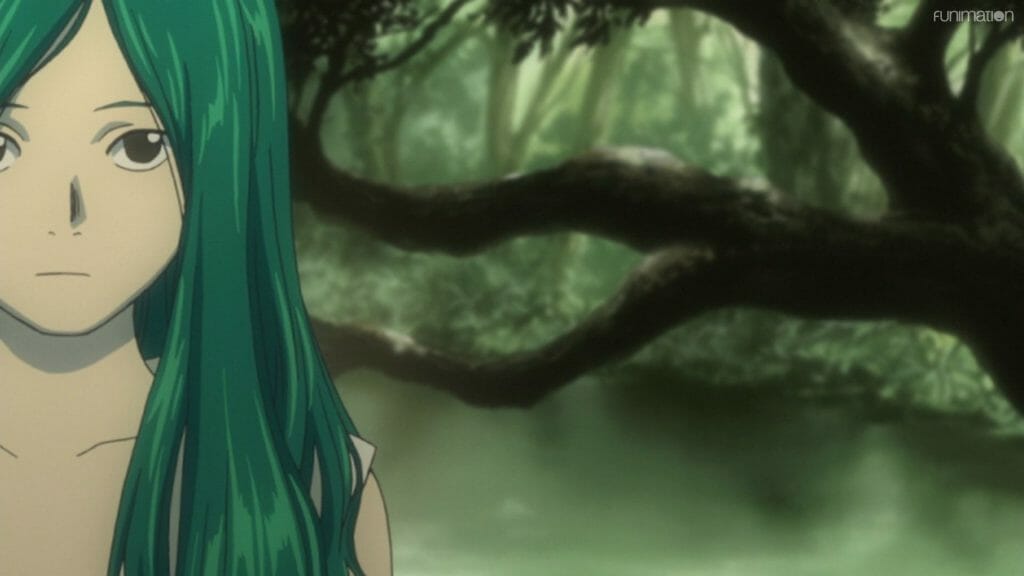
To give one final example, the fifth episode, titled “The Traveling Swamp,” features a massive collection of mushi that resembles a swamp, which moves from one location to the next. Ginko encounters this “living swamp” while traveling through the mountains, noting that it does not remain in one place for long. He encounters a girl with long, green hair who seemingly resides in the swamp, who confirms the itinerant nature of the mushi. Ginko describes the phenomenon as the liquid mushi known as Suiko, the drinkers of which become unable to breathe without touching water. The girl, known as Io, reveals that her village intended to sacrifice her to the spirit of the swamp to avoid a potentially catastrophic flood, but the Suiko mushi transformed her into the green-haired girl whom Ginko meets. Ultimately, Ginko manages to save Io by extricating her from Suiko’s influence, allowing her to resume her life as an ordinary girl.
Such unusual encounters as those presented in Mushi-shi are similar to folktales, as they consist of people meeting (and interacting with) mysterious organisms with supernatural powers that pervade the world. The Kouki exists practically as a primeval source of energy that’s been in existence since the planet’s earliest days, and the mushi have adverse effects on their human hosts. No moral judgment is cast upon the humans who host mushi, though – the series treats these encounters simply as facts of life, and Ginko travels from place to place in order to relieve those affected by mushi from their deleterious conditions. Mushi can be benevolent or malevolent, like their yōkai colleagues – they are lifeforms, after all, and exhibit diverse motivations.


